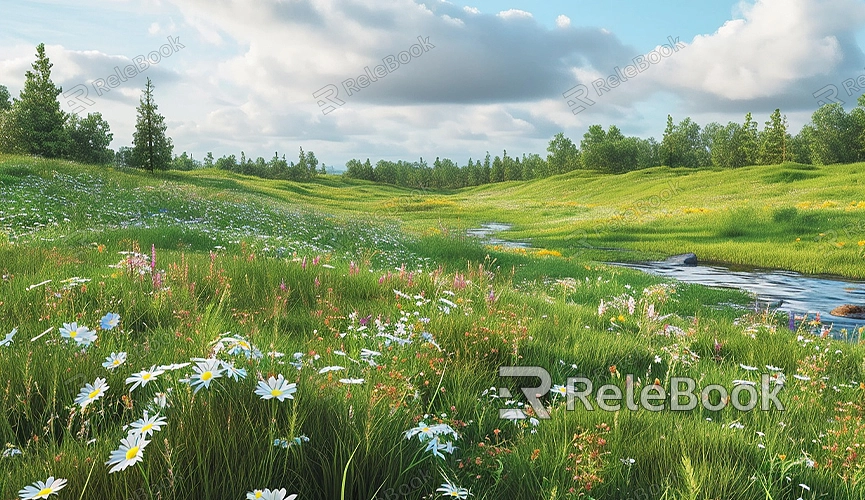Foliage Texture in Blender
Foliage Texture is a design element used to simulate the appearance of plants, including textures for leaves, grass, and other vegetation. This diverse texture type encompasses various types of tree leaves, lawns, shrubs, and other plant elements, allowing us to create rich natural vegetation effects in Blender.

Usage of Foliage Texture in Blender:
1. Selecting the appropriate vegetation type: In Blender, the first step is to choose the vegetation type suitable for the project, such as leaves, grass, shrubs, etc., based on design requirements.
2. Importing and applying vegetation texture: Import the selected vegetation texture into the Blender project and apply it to the surface of the 3D model, ensuring proper mapping.
3. Adjusting texture details and colors: Based on the characteristics of the plants, adjust the texture details and colors to make them more realistic and in line with the appearance of actual vegetation.
4. Optimizing texture size and density: In the design process, moderately adjust the size and density of the texture to make the vegetation effect more realistic and natural.
5. Integrating lighting and other elements: Foliage Texture often needs to be combined with lighting and other plant elements to achieve a more intricate and effective result.
Common types of Foliage Texture:
1. Leaf textures: Includes various tree leaf textures such as oak, pine, maple, etc., used to simulate the appearance of tree leaves.
2. Grass textures: Different types of lawn and grass textures used to cover the ground, adding a natural feel.
3. Shrub textures: Includes textures for various shrub plants, used to add small vegetation elements in designs.
4. Flower textures: Textures for various flowers used to create gardens or colorful scenes.
5. Vine textures: Used to simulate climbing plant effects, suitable for architecture or other structures.
Common rendering applications of Foliage Texture in Blender:
1. Natural scene rendering: Suitable for designing natural scenes, including forests, meadows, etc., to add realistic vegetation effects to the ground and trees.
2. Architectural exterior design: Applying different types of vegetation textures on the exterior walls, roofs, etc., injecting greenery into the architecture and adding vitality.
3. Game environment design: Used in game development to add realism to game scenes with plants, grass, and other elements, enhancing the gaming experience.
4. Advertising rendering: Suitable for products related to nature or outdoor settings, such as outdoor furniture, gardening tools, etc., creating a natural atmosphere.
5. Animation short film production: Adding vibrant appearances to various plants and grass in animated scenes, enhancing the realism of the animation.
Benefits of using this texture for 3D model rendering:
1. Increased realism: Foliage Texture imparts a realistic vegetation appearance to the model, making the scene more lifelike as if immersed in a natural environment.
2. Enhanced naturalness: The application of vegetation texture enhances the naturalness of the scene in rendering, allowing the audience to feel the presence of real plants.
3. Creating vitality: The use of Foliage Texture injects vitality into the design, making the overall scene more dynamic, suitable for projects that highlight a natural and ecological atmosphere.
Foliage Texture is one of the crucial design elements in Blender for simulating the appearance of vegetation. By selecting different types of vegetation textures and adjusting their parameters sensibly, we can create realistic plant effects, adding natural beauty to the scene. Its applications in natural scenes, architectural design, game development, etc., are highly versatile. When using Foliage Texture, we can better express the characteristics of natural plants, bringing outstanding rendering effects to 3D models and scenes. If you need a variety of high-quality 3D textures and HDRI, or if you're looking for 3D model downloads, you can find them on Relebook. After downloading, simply import the textures and 3D models into your project for immediate use.

